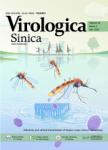Tick-Borne Viruses
Tick-Borne Viruses作者机构:State Key Laboratory of Virology Wuhan Institute of Virology Chinese Academy of Sciences
出 版 物:《Virologica Sinica》 (中国病毒学(英文版))
年 卷 期:2018年第33卷第1期
页 面:21-43页
核心收录:
学科分类:0710[理学-生物学] 1007[医学-药学(可授医学、理学学位)] 1002[医学-临床医学] 1001[医学-基础医学(可授医学、理学学位)] 100103[医学-病原生物学] 10[医学]
基 金:supported by Science and Technology Basic Work Program (2013FY113500) from the Ministry of Science and Technology of China the European Union’s Horizon 2020 Research and Innovation Programme (No.653316) the Strategic Bio-resource Service Network Plan and Building the Biogenetic Resource Preserving Capacity Program from the Chinese Academy of Sciences (ZSSB-002) the Hubei Provincial program of scientific and technological condition platform establishment (2017BEC003)
摘 要:Ticks are important vectors for the transmission of pathogens including viruses.The viruses carried by ticks also known as tick-borne viruses(TBVs),contain a large group of viruses with diverse genetic properties and are concluded in two orders,nine families,and at least 12 genera.Some members of the TBVs are notorious agents causing severe diseases with high mortality rates in humans and livestock,while some others may pose risks to public health that are still unclear to us.Herein,we review the current knowledge of TBVs with emphases on the history of virus isolation and identification,tick vectors,and potential pathogenicity to humans and animals,including assigned species as well as the recently discovered and unassigned species.All these will promote our understanding of the diversity of TBVs,and will facilitate the further investigation of TBVs in association with both ticks and vertebrate hosts.



